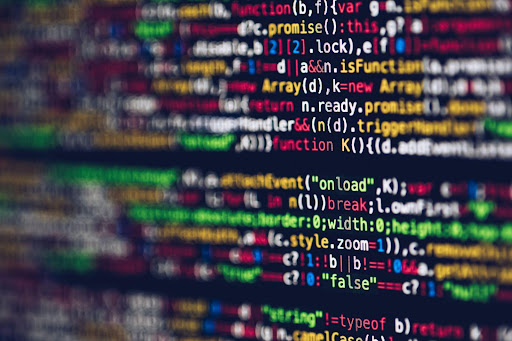Photo by Markus Spiske on Pexels
Table of Contents
Overview
Web 3.0 technologies are those that provide a higher level of functionality and usability than previous generations of web-based technologies. They include social networking, cloud computing, big data, and mobile technologies.
The Framework of Web 3.0
The Web 3.0 framework refers to a proposed next-generation architecture for the World Wide Web. A key goal of the Web 3.0 Framework is to enable a more seamless integration of data and services across the web, while also providing users with more control over their personal information.
- The Semantic Web is a key component of the Web 3.0 Framework. The Semantic Web is a system of interlinked data that can be read and understood by machines. This allows for more intelligent search and discovery of information on the web.
- Cloud Computing is another key technology that forms part of the Web 3.0 Framework. Cloud Computing allows for the delivery of computing services over the internet. These services can be accessed on demand, and are often provided on a pay-as-you-go basis.
- Big Data is another area where Web 3.0 technologies are making a big impact. Big Data refers to the large volumes of data that are being generated by businesses and individuals alike. The challenge with Big Data is to find ways to effectively store, manage, and analyze this data.
- Mobile technologies are also playing a key role in the development of Web 3.0. Mobile devices such as smartphones and tablets are becoming increasingly popular, and are changing the way people access and use information on the web.
Blockchain Technology
Blockchain Technology is a distributed database that enables secure, transparent and tamper-proof transactions. Blockchain is often cited as one of the most important technologies of Web 3.0 due to its potential to disrupt a wide range of industries.
Web 3.0 technologies are those that provide a higher level of functionality and usability than previous generations of web-based technologies. They include social networking, cloud computing, big data, and mobile technologies.
Initial Coin Offerings (ICOs)
An ICO is a type of crowdfunding mechanism used to raise funds for blockchain-based projects. ICOs have become very popular in the past few years, with several high-profile projects raising millions of dollars through this method.
Non-Fungible Tokens (NFTs)
NFTs are a type of cryptocurrency that represents a unique asset, such as digital art or collectibles. NFTs have gained popularity in recent years due to the rise of platforms such as Ethereum that enable their creation and trade.
Decentralized Apps (dApps)
A dApp is a decentralized application that runs on a blockchain network. dApps are often open-source and allow anyone to use or contribute to their code. Examples of dApps include decentralized exchanges, games, and social media platforms, similar to those that exist on the traditional web.
Smart Contracts
A smart contract is a type of digital contract that is stored on a blockchain. Smart contracts are automatically executed when certain conditions are met and can be used to facilitate a wide range of transactions.
Web 3.0 technologies offer several advantages over previous generations of web technologies. They provide a higher level of functionality and usability and can be used to power a wide range of decentralized applications.
Distributed Computing (Edge Computing)
The term “distributed computing” refers to the ability to distribute computational resources across a network of connected devices. This can be used to improve the performance of applications and services, as well as to reduce costs. This is most advantageous for “edge” devices such as smartphones and IoT devices, which often have limited processing power and storage.
Federated Learning
Federated learning is a type of machine learning that allows for the training of models using data from multiple devices. This can be used to improve the accuracy of models, as well as to protect the privacy of data. Artificial intelligence is a key area of research for Web 3.0, and federated learning is one of the most promising methods for training AI models.
Self-Sovereign Identity (SSI)
Self-sovereign identity (SSI) is a type of digital identity that is owned and controlled by the individual. This allows users to have greater control over their data, and to share only the data that they want to share. SSI has the potential to disrupt several industries, such as banking, healthcare, and government.
P2P Protocols
P2P protocols are used to enable communication and collaboration between devices in a P2P network. These protocols can be used for a wide range of applications, such as file sharing, social networking, and distributed computing. Most P2P networks are based on the principle of “peer-to-peer”, which means that each node in the network is equal.
Interplanetary File System (IPFS)
IPFS is a type of P2P protocol that is designed for storing and sharing files. IPFS can be used to store any type of file and is often used to store large files such as videos and images.
Databases (NoSQL Databases)
A database is a type of data storage system that is used to store and retrieve data. Databases can be either “relational” or “non-relational”. Relational databases are those that store data in a tabular format, while non-relational databases are those that do not have a fixed schema. NoSQL databases are a type of non-relational database that is designed for scalability and flexibility.
Some popular examples of NoSQL databases include MongoDB, Cassandra, and Hadoop.
Conclusion
Web 3.0 technologies offer several advantages over previous generations of web technologies. The goal of Web 3.0 is to provide a more user-friendly, seamless, and intelligent experience for users of the World Wide Web. The technologies that form part of the Web 3.0 Framework are playing a key role in making this goal a reality. They provide a higher level of functionality and usability and can be used to power a wide range of decentralized applications. For example, NBA betting will be possible with this new technology.
This gives the user more control over their data and provides a more secure and transparent way of conducting transactions. With the continued development of these technologies, it is more likely now than ever that Web 3.0 will have a major impact on the way we use the internet in future.










